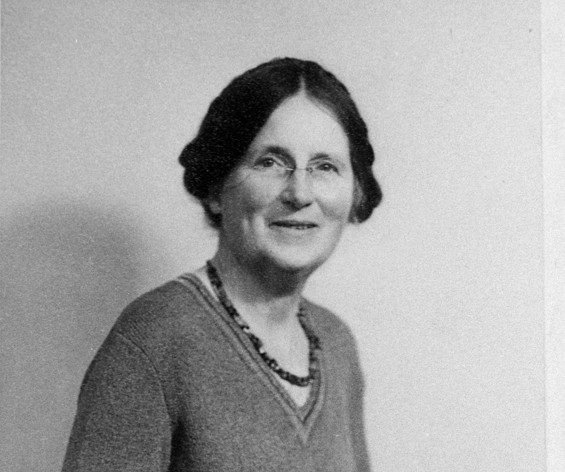27 January 1944: Ada English - Patriot and Psychiatrist – died on this day.
Ada English (1875-1944) grew up in Mullingar, where her father was a pharmacist and town commissioner. She studied medicine at the Catholic University School of Medicine, Cecilia Street (now Temple Bar), and worked at the Mater Misericordiae Hospital, Richmond Asylum, and Temple Street, before becoming assistant resident medical superintendent at Connaught District Lunatic Asylum in Ballinasloe in 1904. Ada spent four decades working tirelessly at the Ballinasloe hospital, until her retirement in 1942.
Brendan Kelly Irish Times 13 October 2014
These are the bare bones of the Life of Ada English. However her time on this earth was one filled with a pioneering spirit that pushed the boundaries of what was possible in this Country both on how we govern our own affairs and in how we treat our mentally ill.
Adeline English was born in 1875 in Cahersiveen, Co Kerry into a middle class family. Her father was a pharmacist and a member of the Mullingar Town Commissioners while her grandfather, Richard, had been Master of the Old Castle Workhouse in the town. She was educated at the Loreto Convent in Mullingar and graduated from Royal University of Ireland (she attended Queen's College Galway) in 1903, reputedly as one of the first female psychiatrists in Ireland.
Psychiatrists are medical doctors, unlike psychologists, and must evaluate patients to determine whether their symptoms are the result of a physical illness, a combination of physical and mental ailments, or strictly psychiatric.
She seems to have made some impression there as Mary Macken (later Professor) remembered her:
I remember her crisp blond hair, remarkable eyes and fascinating lisp. She struck me as being singularly adult. She was in fact some years my senior and tolerant of everything except incompetence or willingness on our part to put up with it. For she burned to get at her real work of medicine; it was for her as much a vocation as a profession.
Ada English- Patriot and Psychiatrist
Brendan Kelly Dublin 2014
At the time Ada started in her profession the treatment of mental illness in this Country was very different from now. The treatment of those with mental distress was based on incarcerating people in vast institutions with very little in the way of creature comforts or outlets for those unfortunate to be placed in them.
For a short period, she had an appointment at a London hospital before, in 1904, taking the position of assistant RMS at the Lunatic Asylum (now St Bridget's Hospital), in Ballinasloe. When she started working at Ballinasloe in 1904, the asylum housed 1,293 patients, 774 of whom were males and 519 who were females. This number was to rise to close on 2,000! It was here that she developed the practice of the use of Occupational Therapy as a therapeutic to help to relieve the boredom and distress of the inmates. Ballinasloe was the first mental institution in Ireland to use electric convulsive therapy to administer shock therapy to patients – a controversial practice but still in use today on a more limited scale.
Ada English was also a committed Nationalist and Republican. Almost her first act in arriving in Ballinasloe was to have the buttons on the staff tunics removed (minted with Queen Victoria) and replaced with Galway’s coat of arms.
She was out in Easter 1916 with the Volunteers in Athenry and was jailed by the British in 1920 and spent six months in prison for ‘seditious literature’. In 1921 she was returned unopposed to represent the NUI constituency in Dáil Éireann. She opposed the subsequent Treaty with Britain and spoke against it in the Treaty Debates:
I think it is wrong; I have various reasons for objecting to it, but the main one is that, in my opinion, it was wrong against Ireland, and a sin against Ireland. I do not like talking here about oaths… but certainly, while those oaths are in it, oaths in which we are asked to accept the King of England as head of the Irish State, and we are asked to accept the status of British citizens—British subjects—that we cannot accept.
Ada lost her seat at the subsequent election in June 1922 but did not drop her interest in politics. She assisted anti-Treatyites during the Civil War and served in a medical capacity in the Dublin battles of July 1922. She maintained her opposition to the Treaty and refused to recognize the legitimacy of the Irish Free State. Along with other members of the rump 2nd Dáil, she played a part in that during the 1920s which saw itself as the true government of the Irish Republic.
She died in 1944 in Ballinasloe a much respected figure both locally and nationally. She is buried in Creagh Cemetery in Ballinasloe

No comments:
Post a Comment